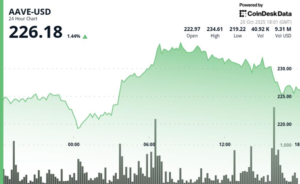Navigating Trademark Impacts: The Case of Bitcoin Logo Registration in Spain
The recent registration of a trademark for the Bitcoin logo in Spain (ES5020240 M4296236) has triggered significant challenges for online sellers on platforms like Amazon and Etsy. This development illustrates the complex interplay between national trademark registrations and international marketplace enforcement. Equipped with government-issued trademarks, sellers have witnessed swift removals of their merchandise, prompting urgent reactions across merchant forums and social media.
Trademark Registration and Online Marketplaces
Amazon’s Brand Registry and Etsy have frameworks allowing rights holders to enforce their trademarks against potential infringements. Under Amazon’s policy, the mere existence of a registered or pending trademark is enough for rights owners to initiate listings’ removal. Similar structures exist on Etsy, where valid notices lead to content removal, impacting sellers globally. The speed at which enforcement actions occur underscores the authority these platforms assign to national registrations, including those from Spain and the European Union.
Legal Backdrop in Spain
However, the legal landscape in Spain contradicts the trademark’s commercial enforcement. Courts have previously ruled that the Bitcoin logo is a public domain asset, arguing that attempts to monopolize it reflect bad faith. Landmark decisions in 2024 and 2025 confirmed this stance, suggesting that private parties cannot claim exclusive rights over a symbol rooted in community ethos. This legal precedent complicates the legitimacy of the recent trademark filing and emphasizes the nuances of public domain law against individual claims.
The Disconnect Between Trademark Law and Market Enforcement
Despite Spain’s judicial decisions rejecting the exclusivity of the Bitcoin logo, online marketplaces are driven by the evidence provided in trademark registries like WIPO and OEPM. These offices provide the necessary documentation for platforms to act swiftly on infringement claims. Unfortunately, this highlights a disconnect between the legitimacy of the trademark’s protection and the enforcement mechanisms in place, which can lead to significant and potentially unjust removals.
Future Implications for Sellers
Looking ahead, sellers must navigate a convoluted landscape shaped by the interplay of marketplace policies and court decisions. In the near term (0-6 months), removals are expected to persist, triggered by the current trademark registration. However, from six to eighteen months, sellers and interested parties could pursue administrative invalidity actions, leveraging previous court decisions to challenge the validity of the trademark. This creates a unique opportunity for clarity on the public domain status of the Bitcoin logo, potentially tempering enforcement actions during legal disputes.
Strategies for Affected Sellers
Affected sellers should remain proactive in documenting their experiences, preserving takedown IDs, and preparing counter-notices aligned with Spain’s judicial history. By staying attuned to developments in OEPM records and leveraging past legal decisions, sellers can better position their claims against further removals. This strategy may help mitigate risk and prevent loss of merchandise during the unfolding legal battles regarding the trademark’s standing.
Outlook for Marketplace Policy
The incident raises critical questions regarding how marketplaces should treat national trademark registrations in light of public domain rulings. Although the Bitcoin logo’s status as a public domain asset is well-documented, the reliance on single-country registrations by platforms like Amazon and Etsy prompts discussions about the efficacy and fairness of their enforcement protocols. As these conversations evolve, they will shape the landscape for trademark enforcement and the balance of rights between trademark holders and the broader community.
In summary, the recent trademark registration for the Bitcoin logo highlights not just the complexities of trademark law but also the challenges faced by online sellers in a rapidly evolving digital marketplace. By understanding both the legal and marketplace mechanics at play, stakeholders can better prepare for the dynamics of trademark enforcement, ensuring equitable treatment for all parties involved.

















